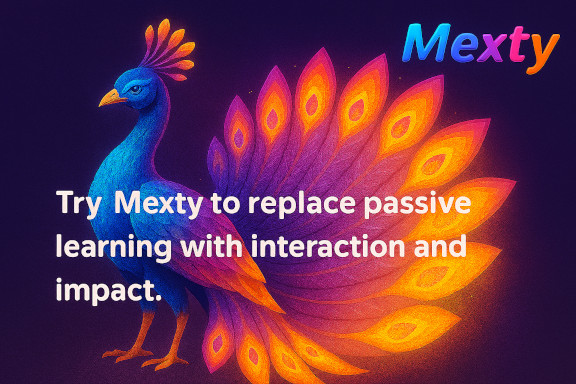Interactive Learning vs Passive Content: Why Engagement Matters More Than Ever
In today's digital age, where TikTok trends and immersive games compete for students' attention, traditional passive learning methods are quickly becoming obsolete. Let's explore why interactive learning is not just a trend, but a necessity for modern education.
The Shifting Landscape of Learning
Today's learners have grown up in a world of instant feedback, personalized experiences, and constant interaction. This fundamental shift in how we consume information has created a new paradigm in education:
- 90% of Gen Z students prefer learning experiences with hands-on elements
- Interactive content generates 2x more engagement than passive content
- Students retain 60% more information through interactive learning methods
Why Interactive Learning Trumps Passive Content
Interactive learning offers several key advantages over traditional passive content:
1. Active Engagement
Instead of merely consuming information, students become active participants in their learning journey. They make decisions, solve problems, and receive immediate feedback—all of which enhance understanding and retention.
2. Personalized Learning Paths
Interactive content can adapt to individual learning styles and paces, ensuring each student receives a tailored educational experience that meets their specific needs.
3. Real-time Feedback
Interactive platforms provide immediate feedback, allowing students to learn from their mistakes and adjust their understanding in real-time.
Creating Engaging Interactive Learning Experiences
Here are practical ways educators can transform passive content into interactive experiences:
1. Gamification Elements
Incorporate game-like features such as:
- Progress tracking and achievements
- Point systems and rewards
- Interactive challenges and quests
- Competitive elements and leaderboards
2. Interactive Assessments
Transform traditional quizzes into engaging experiences with:
- Drag-and-drop exercises
- Interactive simulations
- Scenario-based learning
- Virtual labs and experiments
Implementing Interactive Learning with Modern Tools
Modern course builders like Mexty and learning platforms offer various features to create interactive content:
Key Features to Look For:
- Drag-and-drop course builders
- Interactive quiz and assessment tools
- Multimedia integration capabilities
- Real-time analytics and tracking
- Mobile-friendly design options
Best Practices for Interactive Course Design
Follow these guidelines to create effective interactive learning experiences:
- Start with clear learning objectives
- Break content into digestible chunks
- Include varied interaction types
- Provide meaningful feedback
- Test and iterate based on student engagement data
Measuring Success in Interactive Learning
Track these key metrics to evaluate the effectiveness of your interactive content:
- Completion rates
- Time spent on activities
- Student engagement levels
- Knowledge retention rates
- Student satisfaction scores
Conclusion
The shift from passive to interactive learning isn't just about keeping up with technology—it's about meeting the evolving needs of modern learners. By embracing interactive learning methods and utilizing the right tools, educators can create more engaging, effective, and memorable learning experiences that prepare students for success in the digital age.


